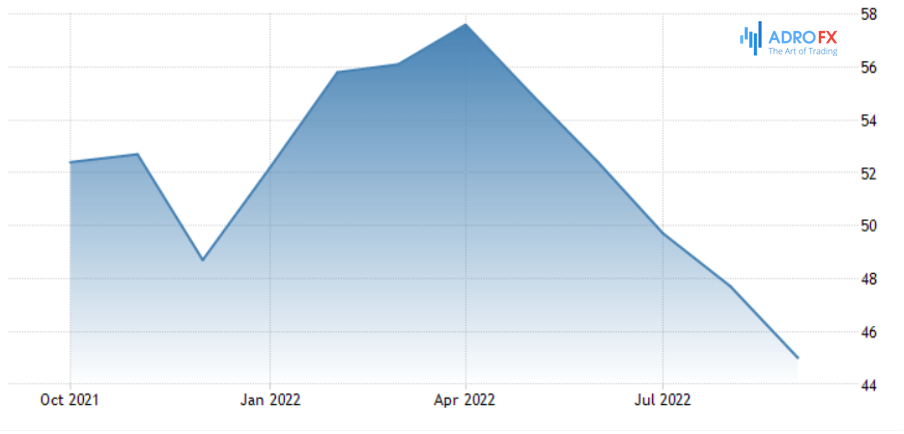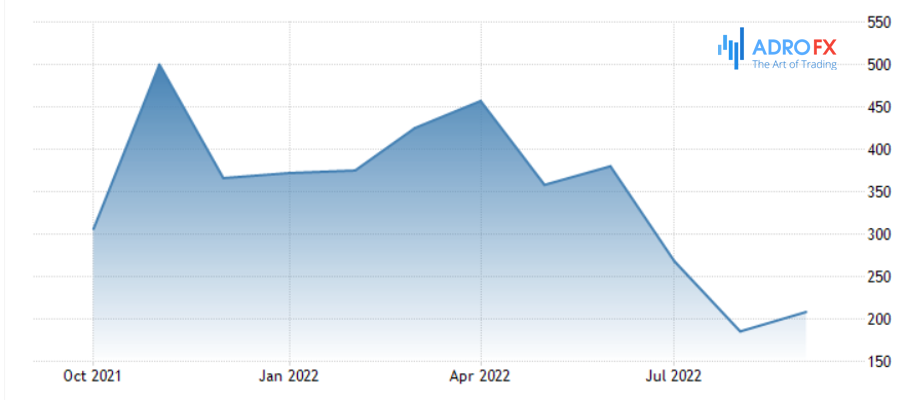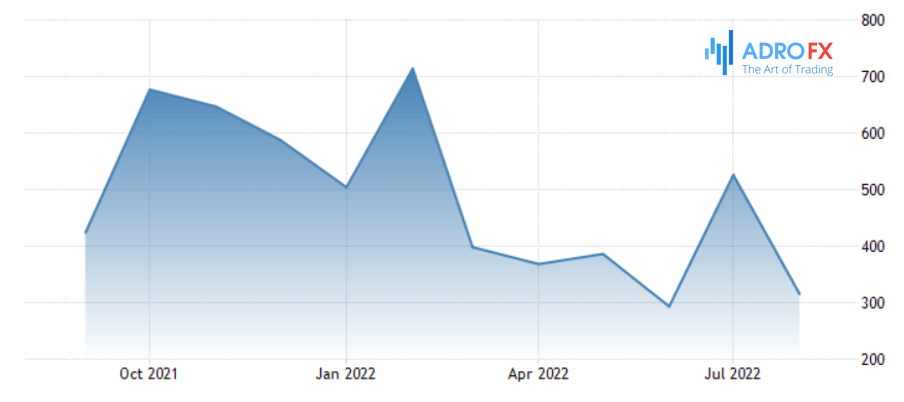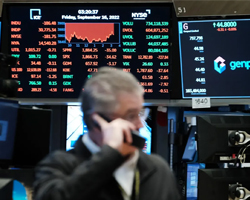Macro Data Influence on the Fed's Rhetoric | Daily Market Analysis

Key events:
UK - Composite PMI (Sep)
UK - Services PMI (Sep)
USA - ADP Nonfarm Employment Change (Sep)
USA - ISM Non-Manufacturing PMI (Sep)
USA - Crude Oil Inventories
The bad news now means the possibility of good news from the Federal Reserve. "Bulls" in the gold market seem to be expecting a significant deterioration in the U.S. (not in terms of inflation, but in terms of economic growth), which would discourage the central bank from aggressively raising interest rates, thereby undermining markets.
Gold bulls were optimistic, as were equity and oil investors, who cheered a drop in the Institute for Supply Management's (ISM) manufacturing activity index, which signaled a slowing economy. The stock market added about 3%, oil prices jumped 5% at one point, and gold prices climbed nearly 2%, returning to the key $1700 an ounce level for the first time since September 14.

The Fed's intention to continue to aggressively raise interest rates to fight inflation has been the main catalyst for the Dow, S&P 500, and NASDAQ indices to drop 20-30% this year. Brent benchmark crude oil futures are now showing a gain of less than 15% for 2022, down from about 50% at the March highs. Gold prices ended the third quarter down 7% after rising 13% in the first quarter.

Investors are trying to figure out how likely it is that the Fed will once again raise its key rate by 75 basis points (bps) in November. The Fed's so-called federal funds rate, on which U.S. borrowing rates depend, is now in the 3.00-3.25% range, three percentage points higher than at the start of 2022. After November, Fed policymakers have scheduled another rate hike in December. That would be the last increase this year, but by no means the last in the current cycle - the central bank intends to raise rates throughout 2023.
On Monday, as October and the third quarter kicked off, the Fed launched another massive public campaign, announcing its intention to curb inflation by tightening monetary policy. Financial markets were flooded with headlines that price pressures remain too high and rates must be "sufficiently restrictive" to restore balance.
The Fed's rhetoric is bringing a recession to the American economy, and that is the only thing it has succeeded in doing in the last year. True, central bankers continue to deny that they want a recession, saying that the U.S. economy is too strong to have a serious and prolonged recession. That sounds plausible, but the only reason the economy hasn't gone down yet is the astonishingly robust labor market.
Federal Reserve Bank (FRB) of Cleveland President Loretta Mester said Friday that the central bank will not stop raising rates even if there is a recession. Inflation remains "high" and will probably continue to cause severe difficulties while the Fed continues to work to ease the worst price pressures in 40 years, Fed Vice Chair Lael Brainard said Friday: "Monetary policy will have to remain restrictive for a while longer so that we have confidence that inflation is moving toward the target level".
So it's not surprising that some macro data have already begun to deteriorate under the influence of the Fed's diligent actions.
For instance, on Monday it was reported that the ISM manufacturing index fell to 50.9 in September from 52.8 in August. The indicator was significantly lower than economists' forecast of 52.2. A value above 50 indicates an increase in activity in the manufacturing sector, which accounts for about 12% of the U.S. economy.

Investors will also pay close attention to Friday's employment data to see how much the Fed's rate hike is affecting the economy. Economists forecast that the number of jobs in the U.S. economy rose by 250,000 last month, the unemployment rate remained at 3.7% and wages continued to grow at an accelerated pace.
Despite the speeches of officials like Mester, unwavering in their mission to get inflation down to 2% from the current 8%, most Fed leaders say that the direction of monetary policy depends on the data.
This is what fuels the hopes of gold, oil, and stock bulls who expect the data to continue to worsen, putting pressure on the dollar and bond yields, and convincing the Fed not to raise rates anymore by 75 bps or even 100 bps.

The recovery rally in gold that began last week is based on a weakening dollar index. That indicator, which compares the dollar to the euro and the four other major currencies, hit a low of more than a week at 111.40, losing about 2.2% in four days.









